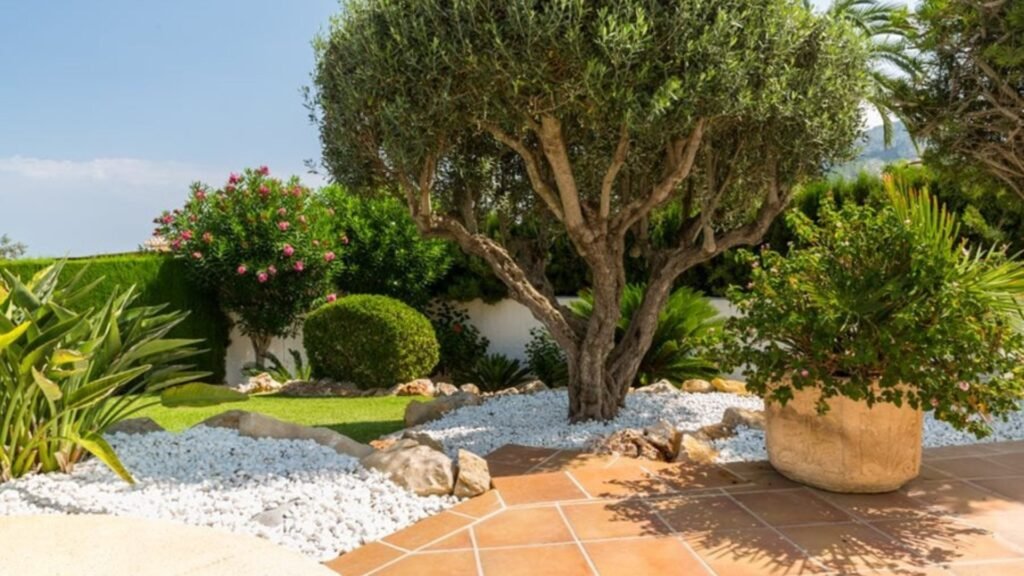How to Create a Mediterranean Garden
A Mediterranean garden brings the warmth and charm of the Mediterranean region to your home. Characterized by its vibrant colors, drought-tolerant plants, and relaxed atmosphere, a Mediterranean garden is perfect for creating a tranquil and visually appealing outdoor space. This guide provides practical tips and inspiration for designing and cultivating your own Mediterranean garden.

Understanding the Mediterranean Garden
Key Characteristics
Mediterranean gardens are inspired by the coastal regions of Southern Europe, including Greece, Italy, and Spain. They are known for:
- Drought-Tolerant Plants: Adapted to low water conditions, these plants thrive in hot, dry climates.
- Sunny Locations: Mediterranean gardens typically feature full sun exposure.
- Natural Materials: Use of stone, gravel, and terracotta to mimic traditional Mediterranean landscapes.
- Relaxed, Informal Layout: Emphasis on creating a casual, inviting atmosphere with curved paths and mixed plantings.
Climate and Soil Considerations
Mediterranean gardens are best suited for regions with hot, dry summers and mild, wet winters. However, many Mediterranean plants can adapt to a variety of climates. Ensure well-draining soil and consider incorporating irrigation systems to manage water needs.
Designing Your Mediterranean Garden
Layout and Structure
1. Pathways and Hardscaping:
- Stone Paths: Use natural stone or gravel to create winding paths that evoke the charm of Mediterranean courtyards.
- Terraces and Patios: Incorporate terracotta tiles or pavers to create outdoor living spaces for dining and relaxation.
2. Walls and Fences:
- Stone Walls: Build low, dry-stone walls or use reclaimed brick to add texture and structure.
- Trellises and Pergolas: Add trellises or pergolas covered with climbing plants for shade and vertical interest.
3. Water Features:
- Fountains: A classic Mediterranean feature, fountains provide soothing water sounds and visual appeal.
- Ponds: Incorporate a small pond or reflecting pool to enhance the serene atmosphere of your garden.
Plant Selection
1. Drought-Tolerant Plants:
- Lavender (Lavandula spp.): Known for its aromatic purple flowers and resilience to dry conditions.
- Rosemary (Rosmarinus officinalis): An evergreen herb that adds fragrance and can be used in cooking.
- Sage (Salvia spp.): Features attractive foliage and flowers, ideal for dry gardens.
2. Mediterranean Trees and Shrubs:
- Olive Tree (Olea europaea): Offers silvery leaves and an iconic Mediterranean look.
- Fig Tree (Ficus carica): Provides lush foliage and sweet fruit, adding both beauty and utility.
- Cistus (Cistus spp.): Also known as rockrose, it has colorful flowers and is highly drought-tolerant.
3. Ornamental Grasses:
- Pennisetum (Pennisetum spp.): Adds texture and movement with its graceful flower spikes.
- Blue Fescue (Festuca glauca): Provides a contrasting color and fine texture to the garden.
4. Ground Covers and Climbers:
- Bougainvillea (Bougainvillea spp.): Vibrant, cascading flowers that thrive in full sun.
- Thyme (Thymus spp.): Low-growing herb that can be used as a fragrant ground cover.
Planting and Care
Soil Preparation
Mediterranean plants prefer well-draining soil. Improve soil drainage by incorporating organic matter like compost or using raised beds. For clay soils, consider mixing in sand or gravel to enhance drainage.
Watering and Irrigation
While Mediterranean plants are drought-tolerant, they will benefit from occasional watering, especially during dry spells. Install a drip irrigation system or soaker hoses to provide consistent moisture without overwatering.
Mulching
Apply mulch around plants to retain soil moisture, suppress weeds, and regulate soil temperature. Use materials such as gravel, crushed stone, or bark to maintain the Mediterranean aesthetic.
Pruning and Maintenance
Regular pruning helps maintain plant health and shape. Remove dead or overgrown branches and spent flowers to encourage new growth. Fertilize plants as needed, using a balanced or slow-release fertilizer suited to Mediterranean plants.
Creating a Mediterranean Atmosphere
Furniture and Accessories
- Outdoor Furniture: Choose wrought iron or wooden furniture with comfortable cushions for dining and lounging.
- Textiles: Use cushions, rugs, and tablecloths in earthy tones and vibrant patterns to complement the garden’s colors.
Lighting
- Ambient Lighting: Install soft, ambient lighting to highlight garden features and create a warm, inviting atmosphere in the evening.
- Accent Lights: Use accent lights to illuminate pathways, water features, and key plants.
Additional Features
- Herb Garden: Include a section dedicated to growing herbs like basil, oregano, and thyme for culinary use.
- Seating Areas: Create cozy nooks with benches or seating walls where you can relax and enjoy the garden.
Conclusion
Designing a Mediterranean garden involves selecting the right plants, incorporating natural materials, and creating a layout that reflects the relaxed, inviting atmosphere of the Mediterranean region. By focusing on drought-tolerant plants, thoughtful design, and regular care, you can enjoy a beautiful, low-maintenance garden that thrives throughout the year.



